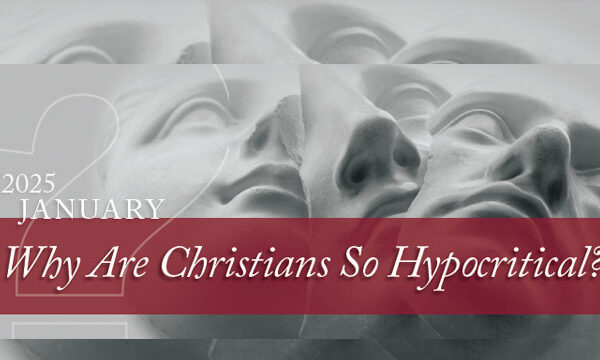Back to series


True Conversion
Click here to open a Print - Friendly PDF
| There are two roads through life and only two, and every human being is a traveler on one or the other. Each road is entered by one of two gates and leads to one of two destinations: eternal life or destruction. This is why Jesus urges people:
Enter by the narrow gate. For the gate is wide and the way is easy that leads to destruction, and those who enter by it are many. For the gate is narrow and the way is hard that leads to life, and those who find it are few. (Matt. 7:13–14) In these verses Jesus highlights the decisive choice that faces every human being: will I embrace life in the kingdom of God, or will I remain in the kingdom of this world? Which road are you on?1 As Jesus’s words show, true conversion is necessary, difficult, and rare. In light of this very sobering fact, have you ever seriously explored what is required to enter the kingdom of God, that is, to become a true child of God? Of all the important questions in life, this is the most important. It is the one question we must get right, for our eternal destiny hangs on it. Because there is much confusion today about conversion, it is important that we look carefully at what the New Testament teaches about this vital subject. Essential ElementsOur starting point is to clarify what we mean by conversion. The key words in the Old and New Testaments that guide our understanding (the Hebrew word shuv and the Greek word epistrepho) commonly mean “to turn, turn back, or turn around.” They signify a change of direction, what we might call a reversing of course or an about face. But when used theologically, both words mean “to change direction in life by turning or returning to the true God.” This necessarily involves turning from other gods (or self) and from sinful attitudes and behaviors. Repentance (the Greek word metanoeo) is an essential element of true conversion and is not optional. John the Baptist focused his ministry on calling the people of Israel to “repent, for the kingdom of heaven is at hand” (Matt. 3:2). He required those who accepted his message to submit to baptism and to “bear fruit in keeping with repentance” (Matt. 3:6, 8). Repentance for John was not an empty word connected with a ceremonial washing. Rather, it denoted a radical change of mind and heart toward God, a recognition of and sorrow for one’s sins against God and neighbor, resulting in a new direction of life characterized by the fruit of obedience to God. A succinct definition of repentance is “a godly sorrow for one’s sin along with a resolution to turn from it.”2 While repentance is a command that requires human response, it is not something that lies within one’s unaided ability to do but is ultimately a gift of God (Acts 11:18).
Faith is the second essential element of true conversion. Faith in God was implicit in John’s preaching, but faith in Jesus is explicit in Jesus’s message. Sometimes Jesus calls people to “repent and believe,” other times to “repent,” still other times to “believe.” However, whenever He uses only one, the other is implied, for they are like opposite sides of a coin. To use a different metaphor, turning to Christ in faith is like making a u-turn on the roadway of life; by its very nature it requires you to turn from the direction you were previously traveling and proceed in the opposite direction. This turning is an essential prerequisite of conversion, but repentance itself does not save us. We are saved by grace alone through faith in Christ alone. Entering the kingdom of God through repentance and faith were consistent themes of Jesus’s ministry: “Unless you repent, you will all likewise perish” (Luke 13:5); “there is joy before the angels of God over one sinner who repents” (Luke 15:10); “unless you believe that I am he you will die in your sins” (John 8:24); “I am the resurrection and the life. Whoever believes in me, though he die, yet shall he live” (John 11:25); “thus it is written, that the Christ should suffer and on the third day rise from the dead, and that repentance and forgiveness of sins should be proclaimed in his name to all nations” (Luke 24:46). After the resurrection and ascension of Jesus, the apostles proclaimed the message Jesus had given them. It consisted of presenting the facts that Jesus was the Son of God, who died for our sins and was raised from the dead, followed by an appeal to repent, believe the good news, and be baptized. This core message appears on the day of Pentecost on the lips of Peter in his sermon about Jesus. The crowd, which had been implicated in Jesus’s death, believed Peter’s message, were “cut to the heart,” and asked, “Brothers, what shall we do?” Peter replied, “Repent and be baptized every one of you in the name of Jesus Christ for the forgiveness of your sins, and you will receive the gift of the Holy Spirit” (Acts 2:38). Later Jesus appeared to Paul, made him an apostle, and commissioned him to preach the gospel (Acts 26:16–18), which includes a call to repentance and faith. As Paul recounts to the Ephesian elders: “I did not shrink from declaring to you anything that was profitable . . . testifying both to Jews and to Greeks of repentance toward God and of faith in our Lord Jesus Christ” (Acts 20:20–21). The specific content of Paul’s gospel message is spelled out when he reminds the Corinthians of the gospel I preached to you, which you received, in which you stand, and by which you are being saved, if you hold fast to the word I preached to you . . . For I delivered to you as of first importance what I also received: that Christ died for our sins according to the Scriptures, that he was buried, that he was raised on the third day in accordance with the Scriptures, and that he appeared to Cephas, then to the Twelve.” (1 Cor. 15:1–5) In Romans 1:16 Paul described this message as “the power of God for salvation to everyone who believes.” A Closer Look at RepentanceRepentance is the negative side of conversion. The Bible speaks of two types of repentance: godly and worldly. Godly repentance is not simply feeling guilty or regretful about past sins. Nor is it simply a resolution to change or turn over a new leaf, as some people do on New Year’s Day. Rather, it is rooted in the recognition of our personal sins before a holy God to whom we are accountable and a determination to abandon them. J.I. Packer’s description of genuine repentance is particularly clear and helpful: The New Testament word for repentance means changing one’s mind so that one’s views, values and ways are changed and one’s whole life is lived differently. This change is radical, both inwardly and outwardly: mind and judgment, will and affections, behavior and life-style, motives and purposes, are all involved. Repenting means starting to live a new life.4 We are drawn to this repentance on the human level mainly by the kindness of God toward us, the desire for eternal life, and the fear of hell. There are three aspects to godly repentance.5 The intellectual aspect is a recognition of and awakening to the seriousness of our sins against God and others; it includes a sense of guilt, remorse, and a desire to turn from our wicked ways. The emotional aspect involves a sorrow for sin and awareness of its offensiveness to God. The volitional aspect involves an inner change of direction in life and is probably the most important. It moves us toward God and His will and away from sinful thoughts, attitudes, and deeds and the desires that give rise to them. Like a cable of three strands, all are intertwined in genuine repentance, though some may be stronger than others. A Closer Look at Saving FaithSaving faith requires a longer explanation because so much confusion surrounds it today. We will begin by noting what saving faith is not. 1. More than 90 percent of Americans believe God exists and that they will go to heaven when they die. But the mere acknowledgment of God’s existence is not saving faith. As James 2:19 says, “Even the demons believe—and shudder.” Certainly we must believe that God exists to be saved, “for whoever would draw near to God must believe that he exists and that he rewards those who seek him” (Heb. 11:6). But as this verse also indicates, true faith trusts the God of the Bible and seeks Him with expectation of response. A somewhat related idea of faith combines a vague, dreamy concept of God with the popular romantic notion that what’s important is not the destination but the journey, and that it is noble and heroic to be always seeking, and never finding, and yet journeying on with hopefulness. Another common idea is the idea that faith is a leap in the dark. The Bible clearly teaches just the opposite: faith is a confident leap into the light—into the arms of Jesus Christ who is the Light of the world. 2. Interestingly, research shows that many Protestants believe that people are saved by faith and works and go to heaven if their good works outweigh the bad. James tells us that faith that does not produce works is not saving faith: “What good is it, my brothers, if someone says he has faith but does not have works? Can that faith save him? . . . faith by itself, if it does not have works, is dead” (James 2:14, 17). James is not saying that we are saved by faith plus works, but by a faith that manifests itself in works, just as Paul teaches in Ephesians 2:10. 3. Saving faith is not temporary. Note Jesus’s teaching in the parable of the sower. “As for what was sown on rocky ground, this is the one who hears the word with joy, yet he has no root in himself, but endures for a while, and when tribulation or persecution arises on account of the word, immediately he falls away” (Matt. 13:20–21). Contrast this to true faith, which is lifelong and fruit bearing. In the parable Jesus continues: “the one who hears the word and understands it . . . bears fruit” (Matt.13:23–24). Some true converts go from strength to strength in following Christ, but others may have ups and downs—may even backslide for a time—but they will persevere in trusting Christ as Lord and Savior until their life’s end. 4. Faith in the institutional church is not saving faith. The church is certainly important. And some Roman Catholics and Protestants believe that faith in the church is sufficient to get them to heaven. Just attend church and be a member in good standing (receive the sacraments, accept what is taught, contribute what you can, do good works), and God will be satisfied and all will be well. However, the Bible knows nothing of such an idea. Rather, it teaches us that the object of faith is all important; that object is Jesus Christ as He is presented to us in Holy Scripture. 5. Neither is the faith to preach, cast out demons, and do miracles in Jesus’s name necessarily saving faith. Jesus tells us that at the final judgment “many will say to me ‘Lord, Lord, did we not prophesy in your name and in your name drive out demons and in your name perform many miracles?’ Then I will tell them plainly, ‘I never knew you. Away from me, you evildoers” (Matt. 7:22–23 NIV). It is sobering to notice that these are not heretics but people who profess orthodox beliefs, evidenced by calling Jesus “Lord, Lord.” This is confusing at first sight; how could anyone hold orthodox beliefs, do such extraordinary works, and not be truly saved? But it makes more sense when we remember that Judas did all of these things, just as the other apostles did, and yet he never had saving faith. These people, who are actively involved in ministry, are secretly living an immoral, ungodly, self-promoting life. Jesus says there will be “many” such people at the judgment. Many, not few. Their profession of faith will be shown to have been in words only and to have made no change in their moral life. This is seen in the fact that Jesus calls them “evildoers,” and people who do not do “the will of [His] Father who is in heaven” (Matt. 7:21 NIV). True saving faith produces love for and obedience to God and Christ, leading to increasing transformation into Christ’s moral likeness.
It is not only a certain knowledge, whereby I hold for truth all that God has revealed to us in His Word; but also a hearty trust, which the Holy Ghost works in me by the Gospel, that not only to others, but to me also, forgiveness of sins, everlasting righteousness and salvation, are freely given by God, merely of grace, for the sake of Christ’s merits.7 A more detailed description of saving faith shows that it has three aspects that are intricately intertwined at the deepest level of the human person—what the Bible calls the heart. Each one is essential, though they may vary in strength. The intellectual aspect (knowledge) involves understanding and accepting as true the Bible’s testimony about God, sin, and salvation in Jesus Christ. This does not mean that to be initially saved one must have deep or broad knowledge of the Bible. In fact, the amount of knowledge one must have—the gospel message—is quite small. But there are key facts/truths to be believed. The emotional aspect (assent) involves what has been called “an absorbing interest” in Christ as the greatest need of one’s life. It is a compelling sense of needing Christ and His salvation and desiring Him. This does not mean that one must have an “emotional experience” to be saved. Some people do, and some do not. The volitional aspect (trust) involves personal trust in Jesus Christ as He is presented to us in Scripture and embracing and surrendering to Him as one’s Savior and Lord. In this act of self-giving, the will is prominent—and essential. Divinely EnabledTrue conversion: the kind of repentance and faith described above are human acts on one level. But on a deeper level, they are divinely enabled acts. As anyone who has tried it will know, it is just as impossible for a person who is spiritually dead to repent and believe the gospel as it is for a corpse to will itself to life. Jesus made this clear in His conversation with Nicodemus, who was a good man, a moral man, a highly educated man, a prominent leader, a man acknowledged by Jesus to be the teacher of Israel. Yet Jesus told him very pointedly, “unless one is born again . . . born of water and the Spirit, he cannot enter the kingdom of God. That which is born of the flesh is flesh, and that which is born of the Spirit is spirit” (John 3:3, 5–6). What did Jesus mean by this enigmatic expression of new birth? “The concept is of God renovating the heart, the core of a person’s being, by implanting a new principle of desire, purpose and action, a dispositional dynamic that finds expression in positive response to the gospel and its Christ.”8
Paul speaks of the same reality in different words in his letter to the church of Ephesus: And you were dead in the trespasses and sins in which you walked, following the course of this world, following the prince of the power of the air, the spirit that is now at work in the sons of disobedience—among whom we all once lived in the passions of our flesh, carrying out the desires of the body and the mind, and were by nature children of wrath, like the rest of mankind. But God, being rich in mercy, because of the great love with which he loved us, even when we were dead in our trespasses, made us alive together with Christ. (Eph. 2:1–5) Here we see the loving operation of the Trinity in the work of our redemption. It was while the Ephesians were still dead in their sins and in bondage to the passions of the flesh that God the Father made them spiritually alive and adopted them into His family through the atoning work of His Son (Eph. 1:5) and the life-giving ministry of His Spirit (Eph. 1:13). How does someone who is spiritually dead experience regeneration and come to new life? Jesus told Nicodemus that the way the Spirit produces new birth contains elements of mystery: “The wind blows where it wishes, and you hear its sound, but you do not know where it comes from or where it goes” (John 3:8). The deep workings of the Holy Spirit in our hearts are not necessarily open to human scrutiny. Later, Jesus shed more light on the process when He said of certain Jews who opposed Him, “No one can come to me unless the Father who sent me draws him” (John 6:44). These two passages reflect a Trinitarian process in which the Father initiates the mysterious regenerating work of the Holy Spirit to draw people to Christ. Near the end of John’s Gospel we are given an insight into the chief instrument the Spirit uses to draw people when we are told that the words and works of Jesus were written down “so that you may believe that Jesus is the Christ, the Son of God, and that by believing you may have life in his name” (John 20:31). New Testament ExamplesThe New Testament gives us a number of examples of true conversion and regeneration. On a larger scale, Paul describes how the members of the church in Thessalonica “turned to God from idols to serve the living and true God, and to wait for his Son from heaven” (1 Thess. 1:9–10). There are also stories of individuals, and no two are quite the same: the sudden, dramatic conversion of Saul of Tarsus, who was met by Jesus as he traveled to Damascus to persecute and arrest the followers of Jesus there, is the most stunning in the Bible (Acts 9:1–19). The conversion of the Ethiopian governmental official, who was reading the Bible as he journeyed home, is also an exciting and dramatic story of God’s sovereign, converting grace. In sharp contrast, the quiet, gradual conversion of Timothy came about as he learned the Holy Scriptures at the knees of his mother and grandmother (2 Tim. 1:5; 3:14–15). The conversion of Lydia, a businesswoman whose heart God opened in a very gentle way as she listened to Paul’s preaching, is yet another example of true conversion (Acts 16:11–15). Though differing in outward circumstances, each case is a divine and supernatural work that produced the same inner change of spiritual regeneration. And the fruit of that change was a life of loving surrender to God, commitment to Jesus as Lord, and increasing conformity to His likeness through the Holy Spirit’s fruit of love, joy, peace, patience, kindness, goodness, gentleness, faithfulness, and self-control. By Grace
|
|||
| Notes: 1. Unless otherwise noted, Scripture quotations are from the English Standard Version. 2. Millard Erickson, Christian Theology (Grand Rapids: Baker, 1985), 3:937. 3. John Stott, “Must Christ Be Lord to Be Saviour?”, Eternity Magazine, September 1959, 15. 4. J.I. Packer, Concise Theology (Wheaton, IL: Tyndale, 1993), 162. 5. I am indebted to Professor Lewis Berkhof’s Systematic Theology (Grand Rapids: Eerdmans, 1941) for the idea of using a threefold structure for describing both repentance and faith. 6. Erickson, Christian Theology, 3:939-40. 7. The Heidelberg Catechism (1563), Question 21. See https://www.ligonier.org/learn/articles/heidelberg-catechism-1563/ 8. Packer, Concise Theology, 157. |
|||

Thomas A. Tarrants
Author, President Emeritus, CSLI Thomas A. Tarrants is President Emeritus of the C.S. Lewis Institute. After serving twelve years as president and nine years as vice President, he retired from his position as Vice President for Ministry and Director, Washington Area Fellows Program, with CSLI in June 2019. He holds a Master's of Divinity Degree, as well as a Doctor of Ministry Degree in Christian Spirituality. Tom is an ordained minister in the Evangelical Church Alliance and a member of the Evangelical Theological Society. He spends his time writing, mentoring, consulting and traveling. His life story is told in Consumed by Hate, Redeemed by Love, published by Thomas Nelson Publishers. COPYRIGHT: This publication is published by C.S. Lewis Institute; 8001 Braddock Road, Suite 301; Springfield, VA 22151. Portions of the publication may be reproduced for noncommercial, local church or ministry use without prior permission. Electronic copies of the PDF files may be duplicated and transmitted via e-mail for personal and church use. Articles may not be modified without prior written permission of the Institute. For questions, contact the Institute: 703.914.5602 or email us.
COPYRIGHT: This publication is published by C.S. Lewis Institute; 8001 Braddock Road, Suite 301; Springfield, VA 22151. Portions of the publication may be reproduced for noncommercial, local church or ministry use without prior permission. Electronic copies of the PDF files may be duplicated and transmitted via e-mail for personal and church use. Articles may not be modified without prior written permission of the Institute. For questions, contact the Institute: 703.914.5602 or email us.
-
Recent Podcasts
Finding God Through Science – Dr. Michael Houts’ Story
by Michael Houts, Jana Harmon on January 31, 2025Dr. Michael Houts shares his journey of science,...Read More
-
William Wilberforce and His Circle of Friends
by Richard L. Gathro on January 24, 2025
-
From Anti-Christian to Pastor – Brian Smith’s Story
by Jana Harmon, Brian Smith on January 17, 2025
-
Recent Publications
Why Are Christians So Hypocritical?
by William L. Kynes on January 1, 2025Oh, the hypocrisy of those Christians—they talk so...Read More
-
How Artists and Their Art Can Point Us to the Creator
by Russ Ramsey on December 2, 2024
-
What about Jesus’s Childhood?
by Jim Phillips on December 1, 2024
0
All Booked
0.00
All Booked
0.00
All Booked
23931
GLOBAL EVENT: Sentenced to Death with Maryam Rostampour-Keller, 8:00PM ET
https://www.cslewisinstitute.org/?event=global-event-sentenced-to-death-with-maryam-rostampour-keller-800pm-et&event_date=2025-02-07®=1
https://www.paypal.com/cgi-bin/webscr
2025-02-07

Next coming event
Days
Hours
Minutes
Seconds
GLOBAL EVENT: Sentenced to Death with Maryam Rostampour-Keller, 8:00PM ET
On February 7, 2025 at 8:00 pmSpeakers

Thomas A. Tarrants
Author, President Emeritus, CSLI
Team Members



 When John was jailed for his preaching, Jesus launched His ministry with the same message, “Repent, for the kingdom of heaven is at hand” (Matt. 4:17). The difference between the message of Jesus and John was that the kingdom of God heralded by John was now actively present in the person and works of the King Himself, Jesus. Thus Jesus added to repentance the call for faith in Himself and in the good news He proclaimed: “Repent and believe in the gospel” (Mark 1:15).
When John was jailed for his preaching, Jesus launched His ministry with the same message, “Repent, for the kingdom of heaven is at hand” (Matt. 4:17). The difference between the message of Jesus and John was that the kingdom of God heralded by John was now actively present in the person and works of the King Himself, Jesus. Thus Jesus added to repentance the call for faith in Himself and in the good news He proclaimed: “Repent and believe in the gospel” (Mark 1:15). In the New Testament, the verb pisteuo and the noun pistis are the main words used to talk about faith. As Millard Erickson observes, these words can mean either to accept a statement as factually true or to indicate personal trust “as distinct from mere credence or belief.” He concludes that “the type of faith necessary for salvation involves both believing that and believing in, so assenting to facts and trusting in a person.”6 This is beautifully expressed in the Heidelberg Catechism’s answer to the question, “What is true faith?” It says:
In the New Testament, the verb pisteuo and the noun pistis are the main words used to talk about faith. As Millard Erickson observes, these words can mean either to accept a statement as factually true or to indicate personal trust “as distinct from mere credence or belief.” He concludes that “the type of faith necessary for salvation involves both believing that and believing in, so assenting to facts and trusting in a person.”6 This is beautifully expressed in the Heidelberg Catechism’s answer to the question, “What is true faith?” It says:



